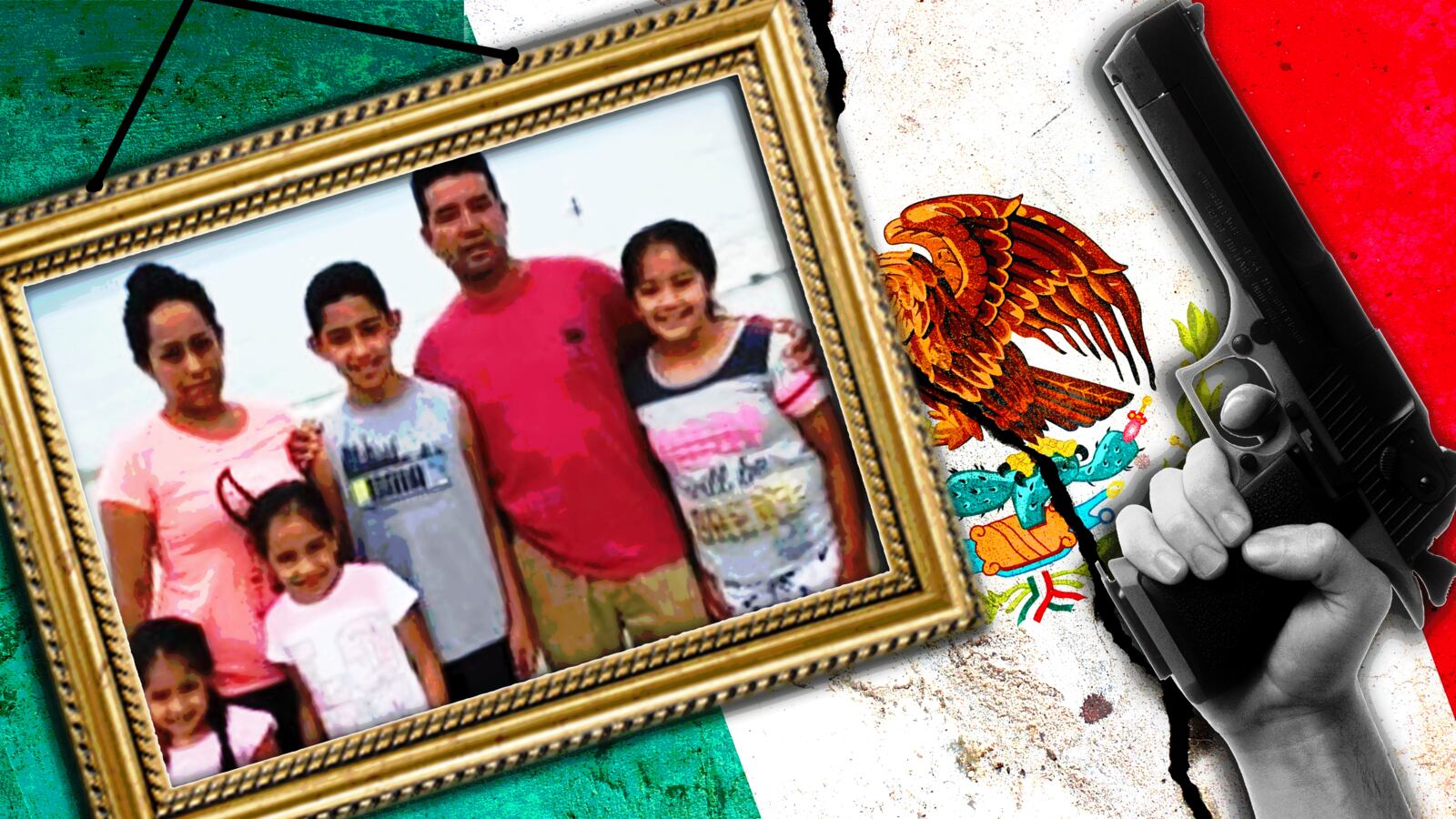The moment that would forever change the lives of Beatriz Morelos, her husband, and their four children came just after noon on July 23, as she drove from work to their home in Painesville, Ohio.
The 33-year-old mother of three girls and a boy was traveling along Interstate 77 when she failed to put an entire lane between her vehicle and an Ohio State Highway Patrol cruiser parked on the shoulder.
Trooper Scott Boyle of the Ohio Patrol, who had graduated from the academy just four months before, responded with a rookie’s zeal and pulled her over. He issued her summons #OHP280747072320171314 for violation of Section 4511.213 of state vehicular law, which requires motorists to “change lanes into a lane that is not adjacent to that of a stationary public safety vehicle.”
That would have been that, but Morelos was an undocumented immigrant. And in Ohio that meant she had been unable to obtain a driver’s license. Boyle arrested her for violation of Section 4510.12, which states that no person “shall operate any motor vehicle upon a public road or highway or any public or private property used by the public for purposes of vehicular travel or parking in this state unless the person has a valid driver’s license.”
At 1:15 p.m. the following day, Morelos appeared in Painesville Municipal Court. She pleaded guilty to both charges and was fined $100, along with a list of other costs, including $5 for “legal research,” $15 in “sheriff fees,” and $8 for “special projects.” The total came to $250, and she would have only needed to pay it to return to the modest apartment complex where she lived with her family.
But a computer check had shown that she had been detained in Nogales, Arizona, while illegally crossing the border from Mexico to the United States back in 2000. She had been returned to Mexico in 2001 but soon after had crossed the border again and eventually settled in Painesville. She married David Casillas, who is residing legally in the U.S. on a work visa. Their four children were all American born and are now aged 3 to 13.
For 16 years, Morelos and her husband had worked manual jobs that her lawyer, Elizabeth Ford, describes as tasks most Americans would not want to do. Her record shows no encounters with the police other than the traffic stop late last month.
None of that mattered. The Ohio authorities notified ICE, which took Morelos into custody. Morelos, who is also known as Beatriz del Carmen Morelos Barajas, was lodged in the ICE holding facility at the Seneca County jail in Tiffin, Ohio, a two-and-a-half-hour drive from Painesville.
“On July 24, Beatriz del Carmen Morelos Barajas, an illegally present citizen of Mexico, was arrested by U.S. immigration authorities, following her local arrest in Paynesville, Ohio,” ICE reported in a statement. “Morelos was previously removed from the United States in 2001. ICE has reinstated her previously issued final order of removal, and she will remain in agency custody pending removal from the U.S.”
The reinstatement of the 2001 order meant Morelos would be deported without any further legal proceedings.
“No judge, no case heard,” the attorney, Ford, said.
To make her plight a total nightmare, Morelos was slated to be sent across the border at Nuevo Laredo in the Mexican state of Tamaulipas. The area is so dangerous that the U.S. State Department has posted an advisory against venturing there.
“U.S. citizens should defer all non-essential travel to the state of Tamaulipas due to violent crime, including homicide, armed robbery, carjacking, kidnapping, extortion, and sexual assault,” the advisory reads. “The number of reported kidnappings in Tamaulipas is among the highest in Mexico. State and municipal law enforcement capacity is limited to nonexistent in many parts of Tamaulipas. Violent criminal activity occurs more frequently along the northern border and organized criminal groups may target public and private passenger buses traveling through Tamaulipas. These groups sometimes take all passengers hostage and demand ransom payments. U.S. government personnel are subject to movement restrictions and a curfew between midnight and 6 a.m. Matamoros, Reynosa, Nuevo Laredo, and Ciudad Victoria have experienced numerous gun battles and attacks with explosive devices in the past year.”
The deportees who have the misfortune to land there are viewed as choice targets by the many kidnappers who operate under the auspices of the Zetas cartel.
“The deportees are better to kidnap; you know they’ve got somebody in the U.S.,” said Jeremy Slack, an assistant professor at the University of Texas at El Paso who has been studying the border for a decade and lived for a time in a migrants’ shelter in Nuevo Laredo. “Even if the amount isn’t much, it’s more than a Mexican family can come up with. A family in the U.S. can scrape together money from friends, auto loans, payday loans. In Mexico, that just doesn't exist.”
A kidnapped deportee who spent decades saving enough to buy a home in the U.S. might end up being forced to sell it for ransom. A deportee who is freed then runs the risk of being kidnapped by somebody else.
The unluckiest deportees suffer an unintended result of the Mexican government’s decision to hike the prison time for kidnapping.
“Which means it’s better to kill somebody than let them go,” Slack said
At the shelter where Slack stayed, residents were told they could not remain inside during the day. The smart ones wandered off. Those who hung around outside became targets.
“A van pulls up, somebody with a gun tells them to get inside, and they do it,” Slack recalled. “You don’t see them again.”
Deportees from other parts of Mexico are sometimes tortured by Los Zetas to ensure they are not enemies. Some deportees are conscripted by the cartel to watch the border and report who comes and goes. The watchers are told they will be paid for their efforts, but sometimes they just disappear.
Slack told The Daily Beast that in some instances the captors seek to recruit members by forcing a captive to kill another captive or to participate in organ harvesting or some other atrocity.
“See who is willing to do horrible things in order to survive,” Slack said.
And yet the U.S. keeps sending deportees to Tamaulipas and to Nuevo Laredo in particular by the tens of thousands each year.
“You’re really deporting people to an area that is extremely violent," Slack said. “I’d say it’s an extreme amount of danger.”
He added, “It’s insanity.”
That was certainly the experience of another of Ford’s clients from Painesville who was sent back across the border at Nuevo Laredo a week before Morelos faced the same peril.
Francisco Narciso was deported even though he was still recovering from head injuries suffered when his car was rear-ended.
Like Morelos, he had been driving without a license because he was an undocumented immigrant. He also had been previously detained at the border. He also became subject to a renewed removal order.
By Ford’s account, ICE initially agreed to hold off until December, giving Narciso more time for his head injuries to heal. ICE then notified her on Monday, July 24, that her client would be deported the following day.
“They deport on Tuesdays in Ohio,” Ford told The Daily Beast.
The next day, Narciso was placed on a U.S. government airplane in Toledo.
“ICE has its own airline,” Ford noted.
The plane landed in Laredo and Narciso was transported to the border. He was instructed to cross on foot into Nuevo Laredo.
Narciso made his way to the bus station and had just purchased a ticket when two men stepped up on either side of him. Both had a gun.
He was taken to a house and locked in a room with an ever-changing group of captives that included children and another deportee, a man, from Painesville. He was already in considerable pain from his head injuries when his captors began to beat him.
That night, Narciso’s fiancée, the mother of his two children, got a phone call in Painesville saying he would be killed if she did not immediately come up with $3,000. She said she could not raise such a sum at such a late hour, and the captors said they would call back in the morning.
The next day, she managed to wire the sum to the captors, only for them to demand another $800. She sent that and they demanded $200 more, but she had reached the limit of what she could send in one day.
After a seeming eternity, Narciso himself called to say he had been freed. He still had his bus ticket and immediately used it to flee in the direction of Mexico City to a place where he hoped he could not be found. He told his fiancée on the phone that he needed to go to a hospital for his head injuries but was afraid to venture out from his hiding place.
Back in Ohio, Ford sought to dissuade ICE from sending Morelos into the same dangers. ICE went ahead and sent her across the border at Nuevo Laredo on the very next Deport Tuesday, Aug. 1.
Thankfully, Morelos’ husband had driven from Ohio and was waiting for her. He whisked her away before she risked suffering the fate of so many others.
“She’s safe,” Ford told The Daily Beast on Monday. “She’s as OK as anybody can be who is a mother with four children she hasn’t seen.”
She and her husband now face some excruciating decisions.
“I’m not sure what the family’s plans are,” Ford said. “The children don’t know anything of Mexico.”
Ford noted that neither of her clients is a violent alien such as the Trump administration has called a dire threat to the nation.
“These are not criminals,” Ford said.
In a statement, ICE reported that it “continues to focus its enforcement resources on individuals who pose a threat to national security, public safety and border security.”
This does not mean ICE will be slow to grab other undocumented immigrants it comes upon.
“As ICE Acting Director Thomas Homan has made clear, ICE does not exempt classes or categories of removable aliens from potential enforcement,” the statement continued. “All of those in violation of the immigration laws may be subject to immigration arrest, detention and, if found removable by final order, removal from the United States.”
Homan has a street cop’s zeal, and one investigation he ran more than a decade ago seems to stay with him.
“I personally worked on a tragic tractor-trailer case in Victoria, Texas, in 2003 in which 19 people were killed as a result of the smugglers’ total indifference to the safety of those smuggled and to the law," Homan said the other day.
In responding to those who suggest he is overzealous, he has offered a glimpse of the heart that all great street cops also possess.
“People weren’t standing with me in Victoria, Texas, in the back of a tractor trailer with 19 dead aliens, including a 5-year-old child lying dead under his father that suffocated in the back of this tractor trailer by these smuggling organizations,” he has said.
Those 19 dead migrants crossed the border at Matamoros in Tamaulipas. The 10 who died in similar circumstances last month crossed from Nuevo Laredo.
The heinous indifference to human life shown by those who sent the ill-fated migrants from Tamaulipas also awaits the deportees who arrive there.
So you have to ask yourself why Homan and ICE keep sending deportees there by the tens of thousands, among them a working dad of two with head injuries and a working mom of four whose one great bit of luck was to have a husband who did whatever he could to keep her safe.
Does ICE really want to feed the monsters?






